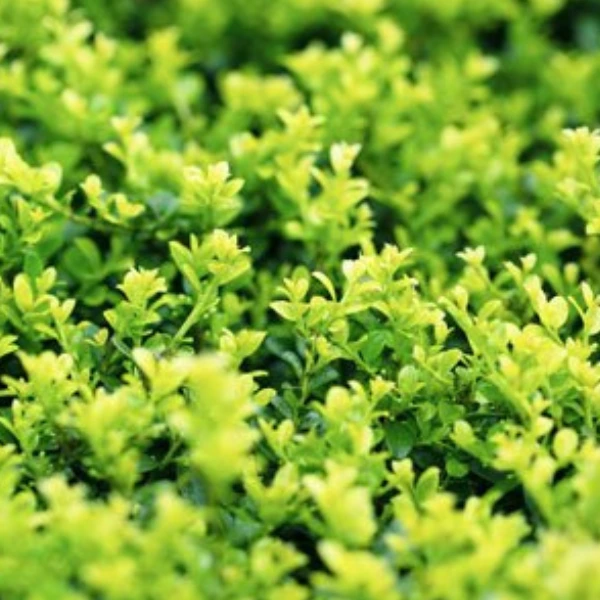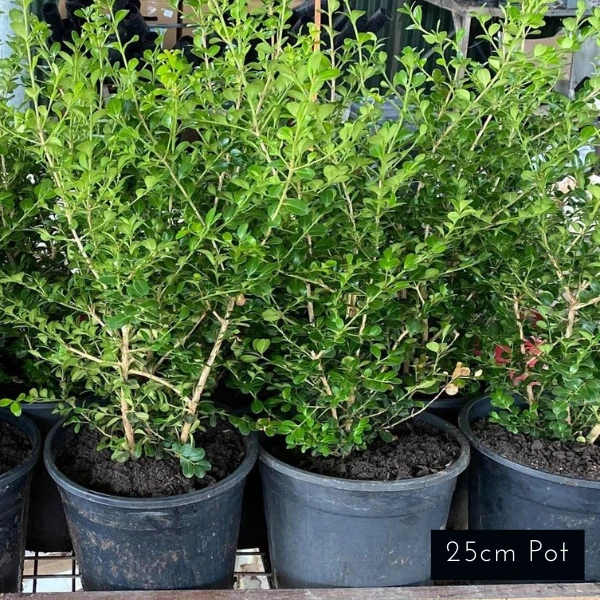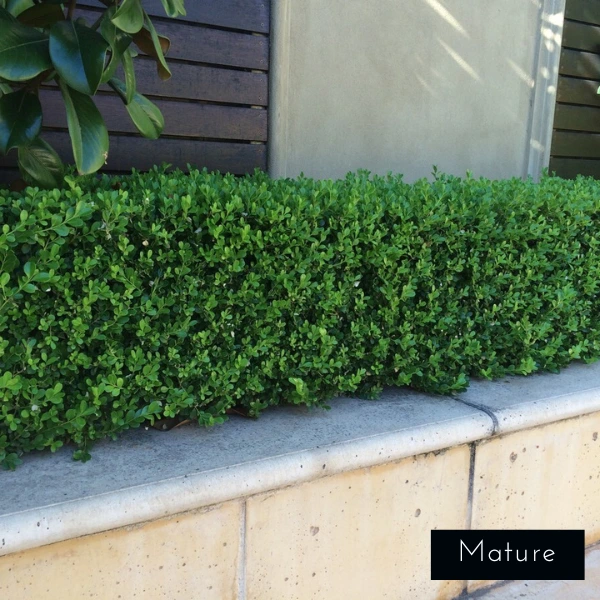Love the look of formal hedging but looking for an alternative to English Box? Japanese Box might just do the trick. With a slightly more open style of foliage, its vibrant colour makes it a popular choice when it comes to creating garden borders and low line hedging. One of the faster growing options of the Buxus family, Japanese Box features compact and dense foliage, which can easily be clipped into crisp lines or sweeping curves. For best result, use a quality fertalizer to maxamise new growth.
Product Specifications
- Common Name: Japanese Box
- Mature Height: 2 meters
- Foliage: Mid – green foliage
- Form/Habit: Upright, compact, shrub
- Uses: Garden borders, feature planters
- Planter suitability: Yes, allow adequate room for growth
- Evergreen/Deciduous: Evergreen
- Drought Tolerance: Moderate; adequate water required in warmer months
- Soil: Well draining soil
- Growth Rate: Medium, encourage new growth with quality Buxus fertalizer
- Sun: Full sun – semi shade location
- Maintenance: Medium – depending on style of hedging
Commonly Asked Questions:
How do I care for my Japanese Box?
Several small prunes a year will keep Japanese Box looking in a neat and clean shape. Use sharp sheers and keep standing back to get a better view of the shape you are creating. Using a ruler / height guide is an easy way to achieve a constant height. Water and fertalise the plant well after a prune. Using a quality product such as Top Buxus is a great way to keep your English Box in good health. Alternatively a slow release fertaliser will also work well.
How far apart should I plant Japanese Box?
If you are looking to create a hedge, planting around 3 plants per meter would be ample. This number is also determined by how mature the plants are that you are selecting. Plants can also be “double” planted by staggering your planting, to create a thicker hedge or for a shaped garden bed.
What is the main difference between English Box and Japanese Box?
Both plants are fantastic choices for low hedging and garden borders. Typically, English Box has a darker appearance and is a little slower in its growth, however is a classic and ever popular choice. The Japanese Box foliage is a little lighter, more lime tones with a slightly difference in leaf shape. Japanese Box will grow a little quicker and larger than English, which needs to be considered when looking at the long term design you are wishing to achieve. Japanese Box is also more suitable to hotter climates or coastal areas.





